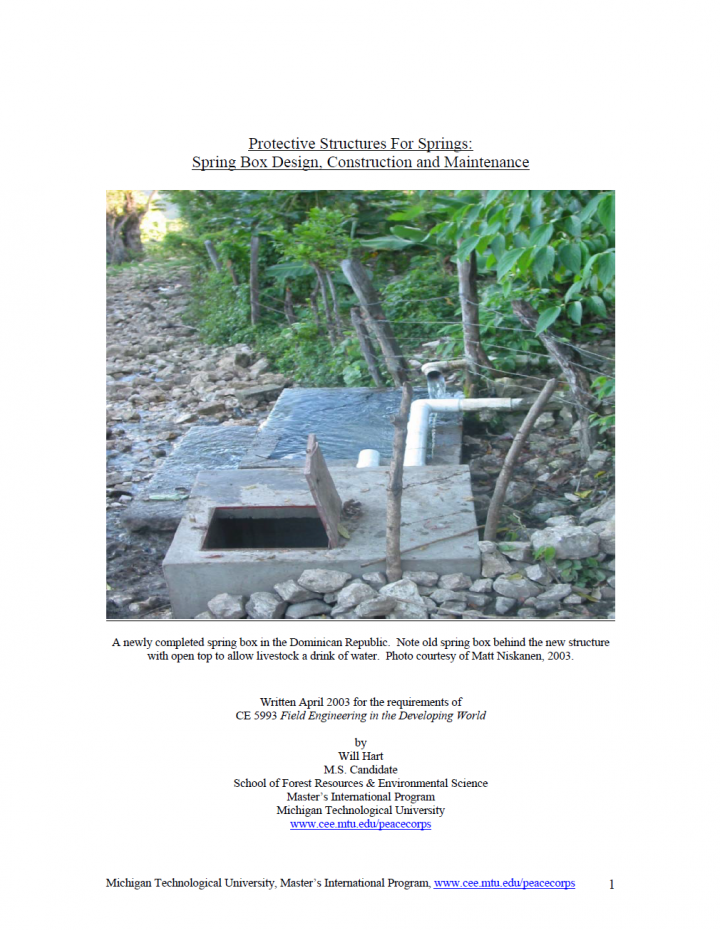
Published in: 2003
Pages: 15
Publisher:
Michigan Technological University
Author:
Hart, W.
Uploaded by:
SuSanA Admin
Partner profile:
common upload
4377 Views
517 Downloads
The main objective of spring development and protection is to provide improved water quantity and quality for human consumption. Before reaching the surface, spring water is generally considered high quality, depending on the composition of the surrounding soils and bedrock. However, groundwater can become contaminated as it
exits the ground's surface. Contamination sources include livestock, wildlife, crop fields, forestry activities, septic systems and fuel tanks located upslope from the spring outlet. Therefore, spring water sources need to be protected at the source or eye. Just as there are many types of springs, there are also many different kinds of protective structures, such as spring boxes, seepage spring development structures, and horizontal wells. However, spring boxes are typically cheaper, require the least skill, and can be made with locally available materials. In contrast to the generally held belief that discharges decline if the springs are touched, the development of natural springs often leads to improved yields.
Bibliographic information
Hart, W. (2003). Protective Structures For Springs Spring Box Design, Construction and Maintenance. Michigan Technological University
Filter tags
English Factsheets and policy briefs North America Politicians and local decision makers Practitioners














